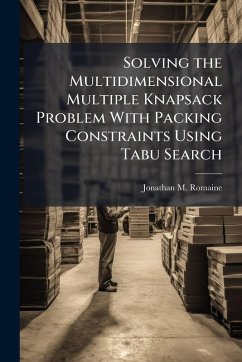
Modeling the Pre-Positioning of Air Force Precision Guided Munitions
Versandkostenfrei!
Versandfertig in über 4 Wochen
15,99 €
inkl. MwSt.
Weitere Ausgaben:

PAYBACK Punkte
8 °P sammeln!
The Air Force's ability to deploy, employ, and sustain operations in forward locations is a key to mission success. An integral part of this strategy is equipment prepositioning, to include: vehicles, aircraft support, consumable inventory, and munitions. This research focuses on defining and developing a model to aid decision makers with the afloat pre-positioning and deployment of munitions in an effort to ensure that the right weapons are available when, and where needed. This research places a particular focus on the strategic, global pre-positioning of the Afloat Pre-positioning Fleet (AP...
The Air Force's ability to deploy, employ, and sustain operations in forward locations is a key to mission success. An integral part of this strategy is equipment prepositioning, to include: vehicles, aircraft support, consumable inventory, and munitions. This research focuses on defining and developing a model to aid decision makers with the afloat pre-positioning and deployment of munitions in an effort to ensure that the right weapons are available when, and where needed. This research places a particular focus on the strategic, global pre-positioning of the Afloat Pre-positioning Fleet (APF) in an effort to minimize the overall response time involved with offloading these ships and transporting their cargo to the intended point of use. The model developed in this study is a mixed integer program that was implemented using the General Algebraic Modeling System (GAMS). The model considers the various aspects of pre-positioning (forward operating locations, Standard Air Munitions Packages, and the APF) in order to optimally locate and configure each APF ship. The methodology for this model was tested and verified using precision guided munitions data for a number of scenarios. This work has been selected by scholars as being culturally important, and is part of the knowledge base of civilization as we know it. This work was reproduced from the original artifact, and remains as true to the original work as possible. Therefore, you will see the original copyright references, library stamps (as most of these works have been housed in our most important libraries around the world), and other notations in the work. This work is in the public domain in the United States of America, and possibly other nations. Within the United States, you may freely copy and distribute this work, as no entity (individual or corporate) has a copyright on the body of the work. As a reproduction of a historical artifact, this work may contain missing or blurred pages, poor pictures, errant marks, etc. Scholars believe, and we concur, that this work is important enough to be preserved, reproduced, and made generally available to the public. We appreciate your support of the preservation process, and thank you for being an important part of keeping this knowledge alive and relevant.












